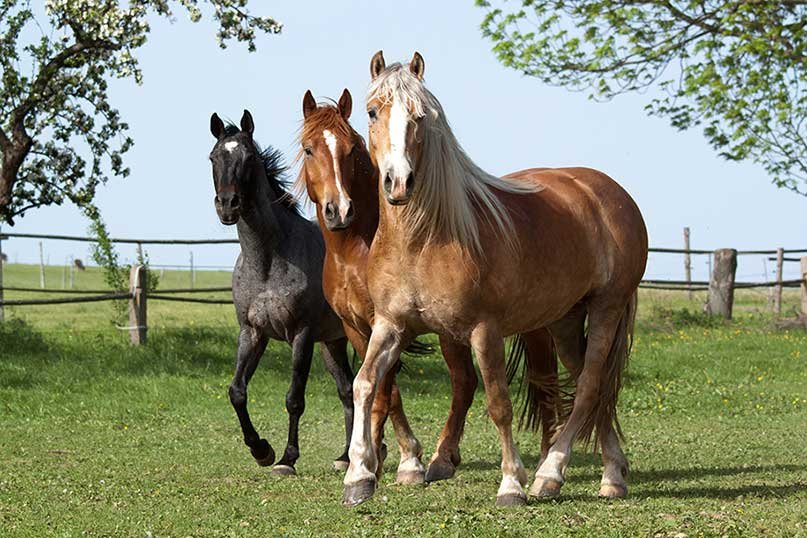Horses are intelligent, sensitive, and social animals. But just like people, they can sometimes develop behavioral issues.
These behaviors can be frustrating, confusing, or even dangerous if not addressed properly. The good news? Most horse behavior problems have clear causes—and with the right approach, they can often be corrected or managed.
In this article, we’ll explore some of the most common behavioral issues in horses, why they happen, and how to deal with them in a safe and positive way.
Understanding the Root Cause
Before fixing a behavior, it’s important to understand why it’s happening. Horses don’t misbehave just to be difficult—they usually act out because of fear, pain, stress, poor training, or misunderstanding.
Here are a few things to consider:
- Is the horse in pain? (Always rule out health issues first)
- Does the horse understand what’s being asked?
- Has the horse had proper training and handling?
- Is the environment causing stress or anxiety?
With patience, observation, and sometimes the help of a vet or trainer, the reason behind a behavior usually becomes clear.
🧠 Common Horse Behavioral Issues & How to Address Them
1. Biting
Why it happens: Biting is often a result of poor boundaries, boredom, pain, or frustration. Sometimes it starts in play but can become dangerous if not corrected.
What to do:
- Don’t reward the behavior (avoid hand-feeding if it encourages biting)
- Set clear boundaries with consistent discipline (never hitting—just firm correction)
- Make sure the horse isn’t in pain, especially around the girth or teeth
- Give the horse plenty of mental and physical stimulation
2. Kicking
Why it happens: Horses kick when they feel threatened, cornered, or overstimulated. It can also be a sign of fear or dominance.
What to do:
- Always approach from an angle where the horse can see you
- Avoid sudden movements or loud noises near their hindquarters
- Train the horse to be handled all over its body, especially legs and back end
- Use groundwork to reinforce respect and trust
3. Rearing
Why it happens: Rearing is a dangerous behavior that often signals fear, resistance, or pain—especially in the mouth, back, or saddle area.
What to do:
- Stop riding until a vet rules out pain
- Check tack for proper fit
- Work with a professional trainer to safely address the behavior
- Improve groundwork to teach better responses to pressure
4. Bolting (Sudden Running)
Why it happens: Bolting is usually caused by fear or panic. It can also happen when a horse is testing boundaries or trying to return to the barn.
What to do:
- Never punish a bolting horse harshly—it may increase fear
- Practice desensitization and confidence-building exercises
- Use one-rein stops in training (with a pro’s guidance)
- Make the “scary” area less stressful through gradual exposure
5. Barn Sour / Buddy Sour
Why it happens: A horse becomes overly attached to their stable or pasture mates and refuses to leave them. This creates anxiety and misbehavior when separated.
What to do:
- Practice short separations, gradually increasing distance/time
- Make the away-from-home experience more rewarding (light work, treats, praise)
- Use groundwork to build focus and leadership
- Ride out with different companions to reduce dependence
6. Refusing to Load in a Trailer
Why it happens: Trailers can be scary! Tight spaces, unfamiliar motion, and bad past experiences often make horses resist loading.
What to do:
- Practice trailer loading regularly—not just before vet trips
- Keep sessions short, positive, and stress-free
- Use treats, calm encouragement, and patience
- Don’t rush or force—build trust over time
7. Weaving, Cribbing, and Stall Vices
Why it happens: These repetitive behaviors (also called “stereotypies”) are usually caused by boredom, stress, or lack of turnout.
What to do:
- Increase turnout time and social interaction
- Provide toys or slow feeders to keep the horse mentally stimulated
- Feed more forage and less high-energy concentrate
- In some cases, special collars or stall modifications can help
8. Head Tossing
Why it happens: Head tossing can be a sign of dental issues, poor bit fit, poll pain, or even allergies and sensitivity to light or wind.
What to do:
- Have a vet or equine dentist check the teeth and mouth
- Check saddle, bridle, and bit for proper fit
- Consider a nose net or UV-protection mask if it’s seasonal
- Rule out nerve sensitivity or sinus issues
General Tips for Addressing Horse Behavior Problems
- Stay calm and consistent. Horses respond best to clear, confident leadership.
- Never punish in anger. Harsh punishment can create fear and make things worse.
- Use positive reinforcement. Reward good behavior with praise, scratches, or treats.
- Work with professionals. Sometimes, a trainer or behaviorist is the best option.
- Give your horse a healthy routine. Turnout, proper diet, and social time matter!
Every horse is different, and there’s no one-size-fits-all solution to behavioral problems. But with patience, understanding, and the right training, most horses can overcome their issues. Whether it’s a young horse learning manners or an older horse acting out due to pain, what they need most is trust, respect, and consistency.

